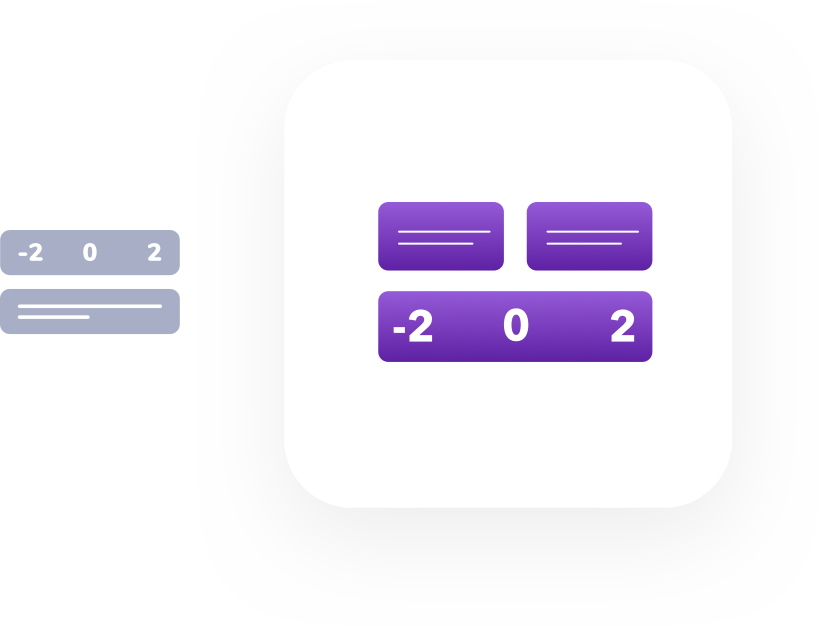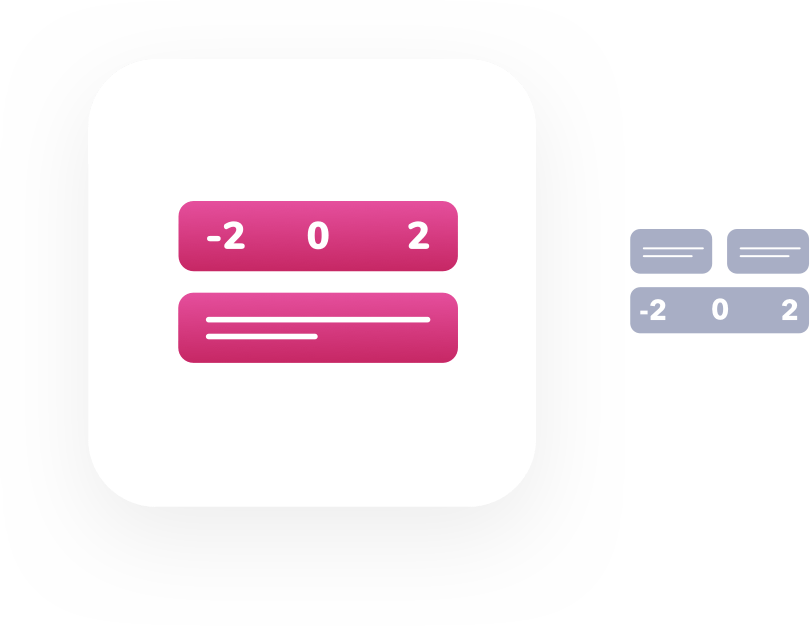Easily run Script and Judgement Concordance tests
Run Concordance tests directly in Wooclap by collecting expert responses, gathering student answers, and comparing both in real time. Reveal expert justifications to deepen understanding and assess complex decision-making.

Why use a Concordance question for your classroom?
Traditional assessments focus on correct answers, not how learners reason through uncertainty. Concordance questions let students engage with real-life ambiguity, compare different lines of thought, and practice decision-making in complex scenarios. It’s an ideal tool for assessing nuanced thinking in professional and clinical fields.
Students rarely get to see how experts think through complex problems. With Concordance questions, you can display expert responses side-by-side with your learners’ answers, and show their justifications. This transparency fosters deeper reflection and helps learners understand not just what the experts chose, but why.
How Wooclap’s Script and Judgement concordance questions work
Create the question
Choose the Concordance question type, either Script or Judgement, and input the scenario elements. For Script Concordance: Enter the case description, hypothesis, and additional information. For Judgement Concordance: Describe the case vignette and ethical or professional question. You can either preload expert data or leave the expert fields empty if you plan to collect their input through Wooclap.
Collect or import expert responses
If you haven’t already gathered expert answers: Share your Wooclap event with the expert panel. Experts respond using a Likert scale and provide written justifications. Once responses are submitted, import the expert-enriched question into your live event using Wooclap’s import feature.
Launch the question and display expert insights
Ask the question in a live session. Compare student responses side-by-side with expert distributions using the “correct answer” button. Optionally display expert justifications to deepen discussion and reinforce reasoning.
Script Concordance Test
Put students in real-world professional scenarios where they need to make quick, informed decisions based on changing information. This is especially valuable in clinical and health education, where learners must reason through uncertainty, such as choosing a treatment or evaluating a diagnosis.
In Wooclap, you can present a case, add new data, and ask learners how it affects their initial hypothesis using a Likert scale. During or after the session, display how experts responded and explain their reasoning, helping students refine their clinical judgment.

Judgment Concordance
Use this format to dive into professional or ethical dilemmas where there’s no single right answer. Ask students to evaluate behaviors, reflect on professional standards, and consider multiple perspectives.
Ideal for business, law, education, or any field where ethics matter, these questions encourage critical thinking and discussion. Learners compare their choices with expert viewpoints and justifications, gaining insight into the reasoning behind different responses, all within the same platform, with no need for external tools.

Why teachers love using Wooclap’s Concordance questions
Build questions with real-world scenarios
Create Script or Judgment Concordance questions directly in Wooclap, using case descriptions, hypotheses, or scenarios to reflect professional dilemmas or ambiguous situations.
Collect or import expert panel data
Easily import pre-collected expert opinions or gather new responses asynchronously via Wooclap, including Likert-scale answers and supporting comments.
Compare expert and learner responses
Display learners' responses alongside those of the expert panel during the session to highlight reasoning differences and spark rich discussion.
Show expert justifications live
Reveal expert comments after voting to explain reasoning and support deeper reflection.
Use 'Correct Answer' mode to guide feedback
Activate the “Correct Answer” view to clearly display how audience responses align with expert consensus, ideal for formative or summative feedback.